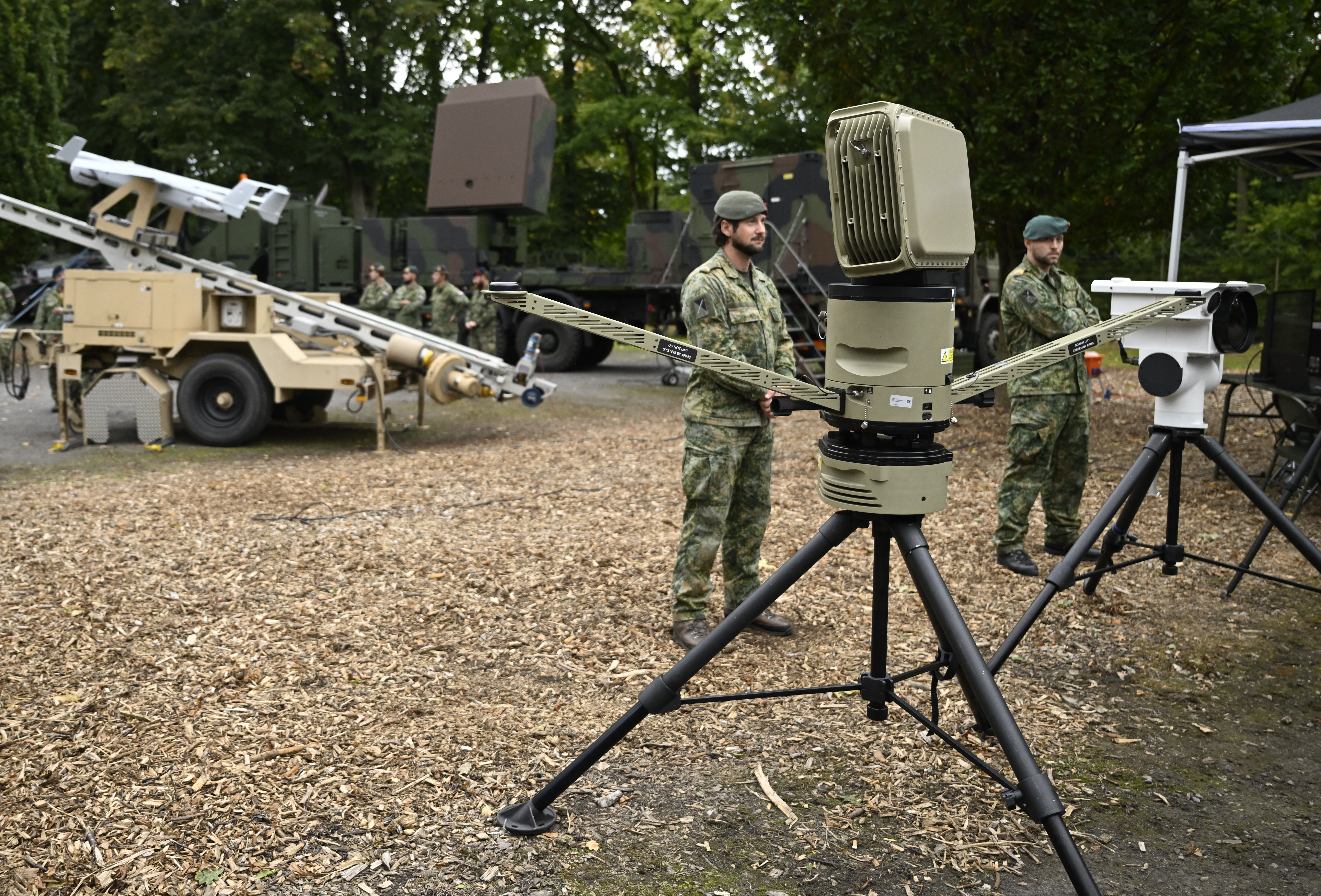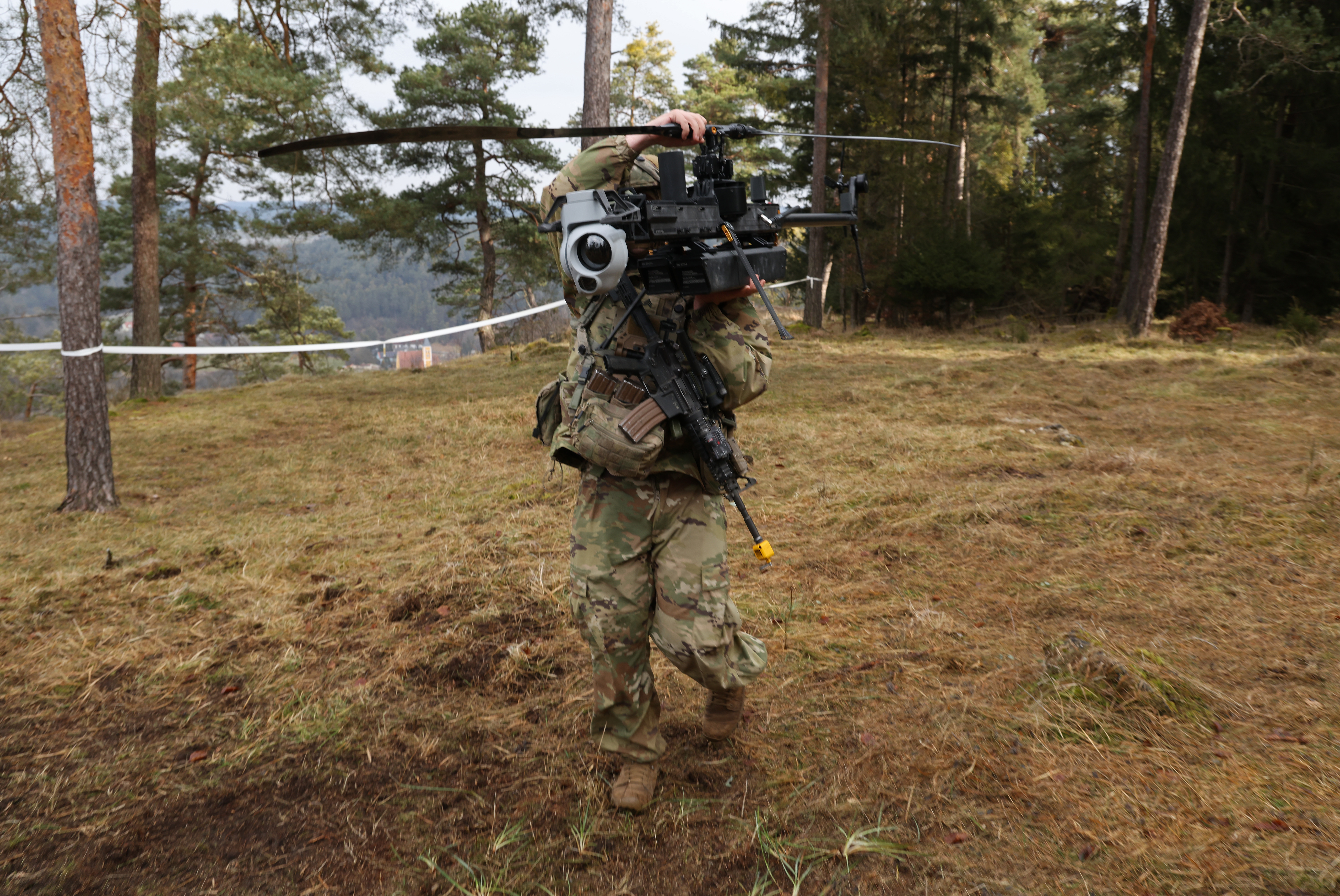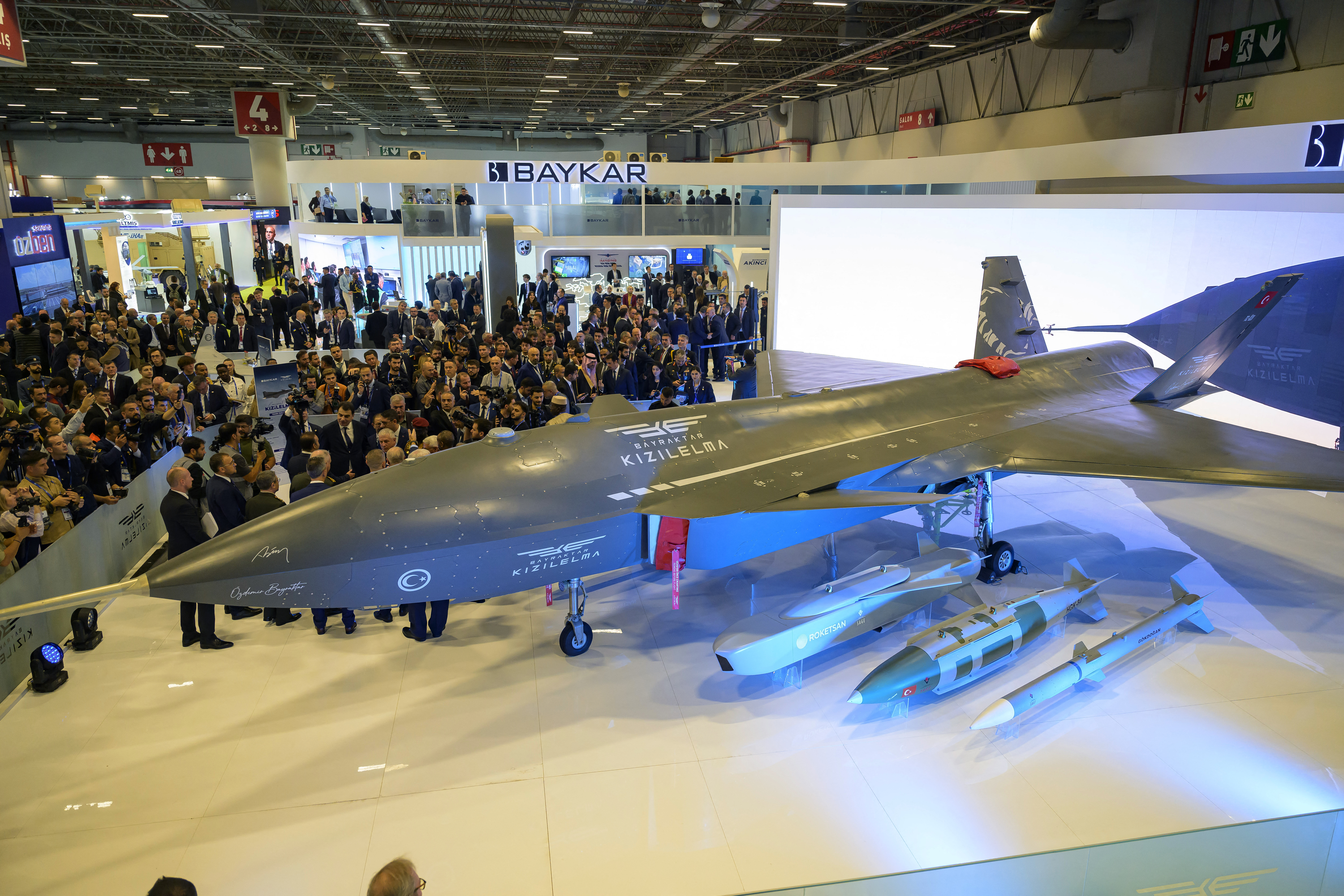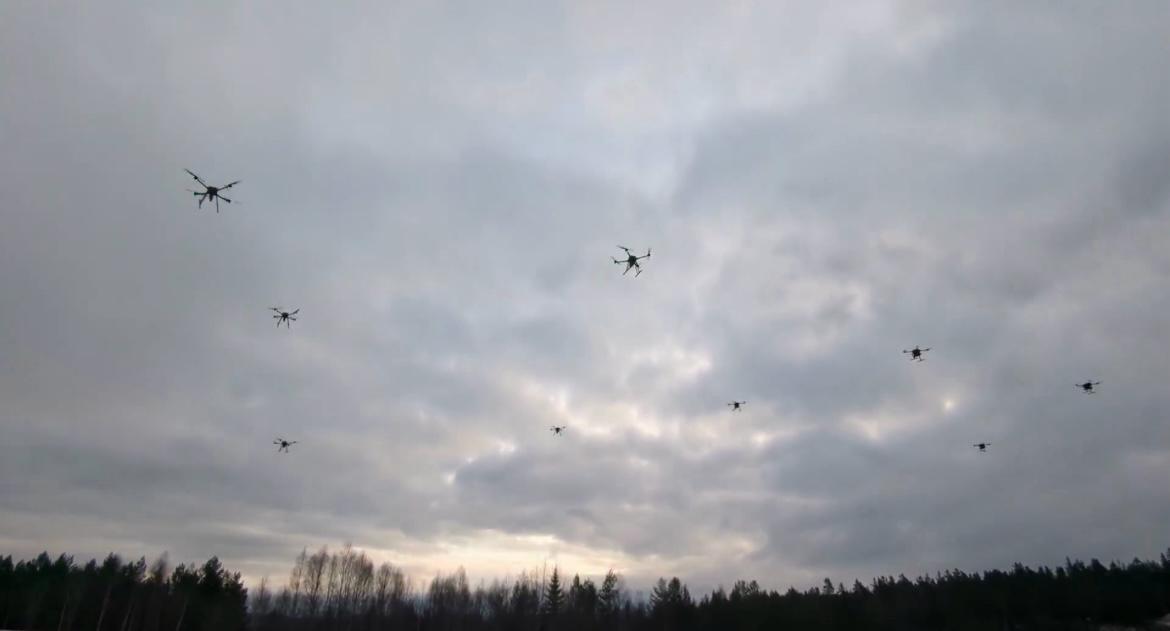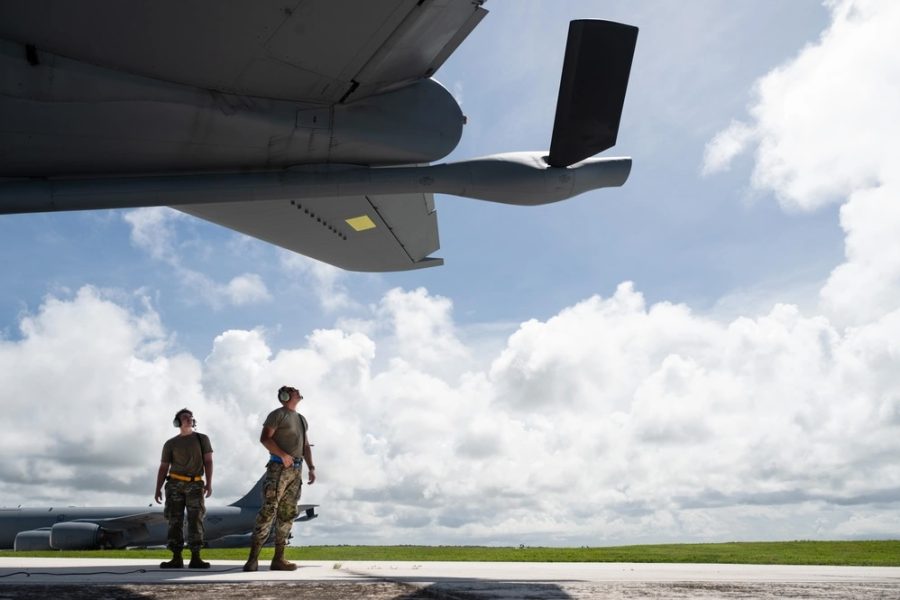
ANDERSEN AIR FORCE BASE, Guam—The night of July 13 was a long one for about 400 U.S., German, and French paratroopers. By the time their parachutes opened in the dark sky over Charters Towers in northeastern Australia, they had already flown about 6,600 miles south from Joint Base Elmendorf-Richardson, Alaska, aboard six C-17 transport jets.
Flying that far takes a lot of gas, so the transports met up with 10 Air Force tankers—a mix of KC-46s and KC-135s—about four hours north of Guam, where the tankers offloaded 470,000 pounds of fuel, about the same weight as three empty Abrams tanks.
Moving all that gas to the right time and place over the vast Pacific Ocean took about 24 hours of nearly nonstop work for a team of planners and maintainers on Guam, who in the meantime were also planning and launching one-off sorties for smaller operations.
“For tankers, the challenge is ‘how do you link up with your receiver unit?’ And that’s a lot of what we do,” said Lt. Col. Kelsey Payton, who oversaw air refueling operations during the Department-Level Exercise series, a massive wargame where more than 12,000 troops, hundreds of aircraft, and at least six international partners practiced air warfare together across the Pacific.
“We’ve gotten pretty good at it,” Payton added, “but you can see there’s a lot of moving parts here.”
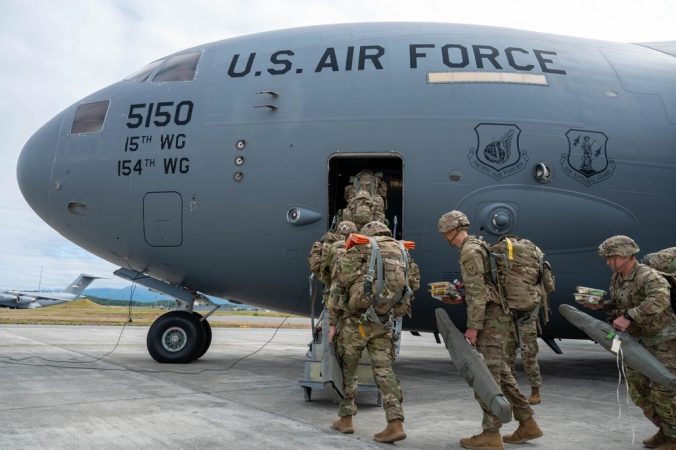
While the general concept of the paratrooper jump had been in the works for months, planners had about a day to pull together the nuts-and-bolt details the air crews needed to execute, such as radio frequencies, takeoff-time, and flight plans. That’s a typical timeline at Air Mobility Command, which oversees Air Force tankers and transports, Payton explained.
“We have a dedicated team of mission planners that come together and they say, ‘Hey, here’s the tasking, build the plan,’” she said.
In the military, those nitty-gritty details fall under a concept called tactical control. But maintaining that control is easier said than done when operating in unfamiliar airfields, where it’s not immediately clear who to call to move cargo or get aircrew to and from their hotels.
“I spent most of my first few days here walking and driving to different agencies on base just putting faces to names, getting phone numbers, and knowing who to talk to,” Payton said.
Those relationships help when things inevitably go sideways, like when weather or new airspace restrictions force changes in flight plans. Indeed, only about half the tankers that were originally supposed to support the DLE showed up, while the rest had to support real-world operations as the U.S. geared up to strike Iranian nuclear facilities shortly before the DLE kicked off.
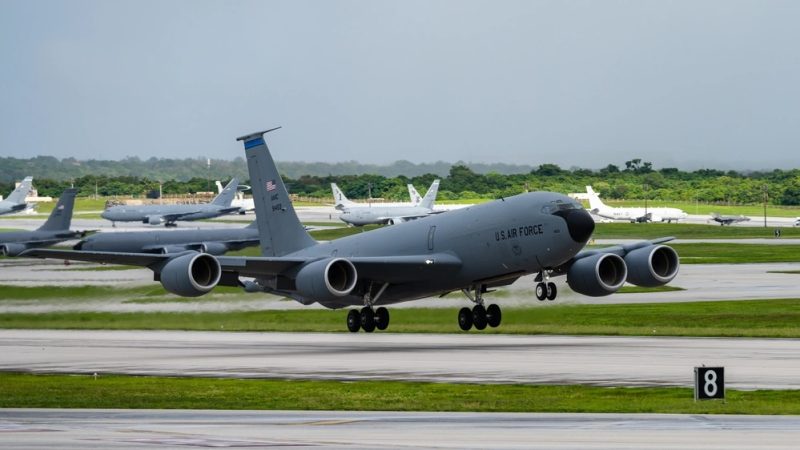
Contingencies like that mean planners often have to negotiate to build a mission that can be accomplished with the resources on hand. The C-17s might ask for 12 tankers, for example, but if only 10 are available, then Payton might ask if the receivers can make do with less gas.
“I’ll ask ‘hey can we come down on the ask?’ ‘Oh yeah, we can come down 10,000 pounds on every jet.’ OK perfect, I can still meet your requirement,” she said.
It gets more complicated planning a 10-ship formation, a rarity in the tanker world, and none of the 10 tankers that refueled the paratrooper transports had been in theater longer than 24 hours before takeoff.
“What makes this unique is the amount of aircraft,” said Capt. Luke Hartings, who commanded one of six KC-135s scheduled to fly that day. “It’s not very often that we do a six-ship, and with this many receivers.”
Hartings had flown in the night before, as did the tanker he was about to climb aboard. Maintainers worked all night getting the 60-something-year-old jet ready to fly the next day.
“They work miracles,” Payton said. “I am not even going to pretend to say I work half as hard as they work.”
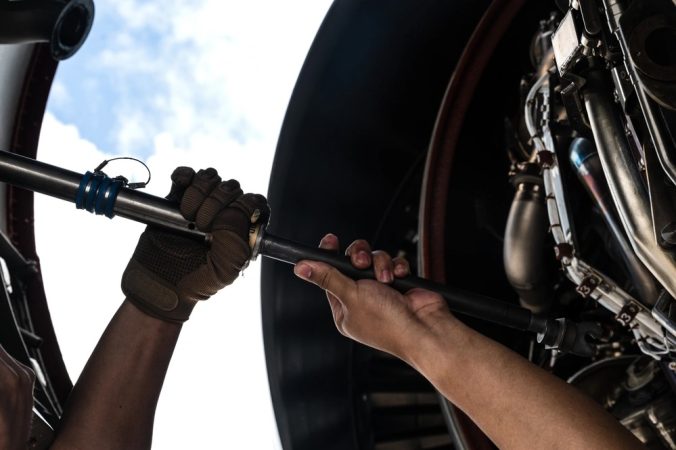
Yet Payton herself was up past 1 a.m. the night before, trying to make sure Airmen didn’t have to wait three hours for fuel trucks to show up. Despite the complexity of the mission and the vast distances involved, much of the lieutenant colonel’s job was to make sure Airmen on the flight line had the basic things they needed to stay fed and hydrated on long shifts in humid conditions.
“My production superintendents are constantly running around in trucks with water and food and it’s still not enough,” she said.
When Hartings and the other air crews began stepping out to their jets to begin the pre-flight process, Payton was not nervous about the outcome. Over the course of her career, she has seen tanker crews move fast to support everything from airstrikes against ISIS in the Middle East to humanitarian aid missions in west Africa during the 2014 ebola outbreak.
“We operate all around the world, and when you do that, you have to have a level of trust with your folks,” she explained. “They know the mission, they know the intent, they studied up, they got the briefing this morning, and now they’re ready to go out and do it.”
The crews didn’t disappoint. Afterward, Payton said the sortie went “extremely well” thanks in part to new tools that let aircrews connect over vast distances. One of the C-17s and one of the KC-135s carried an Airlift Tanker Open Mission Systems kit, a backpack-sized device that acts as a mobile hotspot for secure and commercial Wi-Fi in flight. The ATOMS kits let the two formations talk with each other over long distances and switch up their plan mid-flight for a smooth rendezvous.
“The exercise demonstrated the benefit of having at least one connected aircraft in each formation,” Payton said. “For future exercises, we would want to schedule that requirement ahead of time, allowing planners to build contingency courses of action leveraging the ability to connect.”
But the lieutenant colonel and the rest of the tanker showrunners didn’t have time to celebrate, as they still had a long list of missions to plan.
“The pace is fast, and you’re like ‘dang it, we’re going nonstop,’” Payton said. “But I think it’s because that’s what our mission is: right people, right place, right time. At the end of the day, everyone needs Air Mobility Command.”
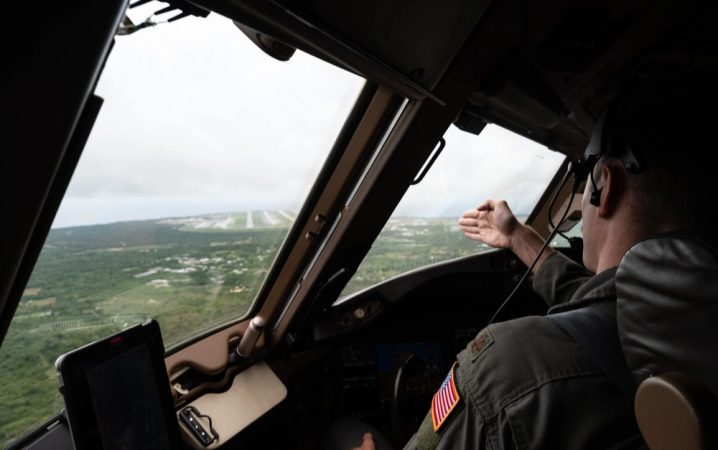
The post How the Air Force Launches a 10-Ship Tanker Sortie in 24 Hours appeared first on Air & Space Forces Magazine.

Air, Air Force tankers, air refueling, department level exercise, DLE, mission planning, Mobility Guardian, mobility guardian 2025, paratrooper drop, Talisman Sabre
Air & Space Forces Magazine
[crypto-donation-box type=”tabular” show-coin=”all”]

